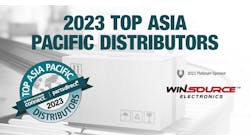Passive components buyers may want to rethink their supplier choices for capacitors in light of the Department of Justice (DOJ) investigation into price fixing, bid rigging, and other uncompetitive practices in the capacitor industry.
Two capacitor manufacturers so far have agreed to plead guilty to a felony charge that they conspired to fix prices of capacitors. The DOJ announced in April that Hitachi Chemical Co. Ltd. would plead guilty to conspiring with other capacitor manufacturers to fix prices for electrolytic capacitors sold to customers in the United States and other countries between 2002 and 2010.
In January, NEC TOKIN Corp. pleaded guilty to participating in the same conspiracy from 2002 to 2013 and was fined $13.8 million. In addition, in March a grand jury indicted a former global sales manager for one of the capacitor manufacturers for his participation in the conspiracy.
The DOJ will not say if more capacitor manufacturers will be charged with price fixing. However, the investigation continues and the department wants to hear from anyone who has knowledge of price fixing or suspects that capacitor manufacturers have been colluding to fix capacitor tags.
Price fixing is not new in the electronics industry. Semiconductor buyers may remember that a number of brand-name DRAM manufacturers were charged with fixing the price of DRAMs about 10 years ago. Memory IC companies were fined and some executives were jailed for their involvement in the price-fixing conspiracy.
Several liquid crystal display (LCD) manufacturers also pleaded guilty or were convicted of charges that they, too, colluded to set prices for LCDs from 1999 to 2006. The companies paid criminal fines of $1.39 billion and about a dozen executives were convicted and imprisoned.
Buyers should not be surprised if the current DOJ investigation involving capacitor manufacturers leads to probes of manufacturers of other types of passive components. Following its DRAM investigation, the DOJ also investigated makers of the SDRAM and NAND flash memory for possible price collusion. However, the probe ended without any companies being charged.
In the ongoing probe of capacitor manufacturers, buyers should meet with their companies’ legal departments to determine if their companies have been victims of price fixing and what legal recourse should be pursued, such as joining a class-action suit.
But, more importantly, passive component buyers need to review their rosters of capacitor suppliers and decide whether they need to make changes, which may be difficult if it turns out other major capacitor manufacturers are involved in the price-fixing scheme.
The number of capable capacitor manufacturers is finite and while capacitors are a low-cost commodity compared to integrated circuits, they are ubiquitous in electronics equipment and purchased in huge volumes. Large OEMs need suppliers that can develop new parts based on the latest technology, produce them in large quantities at world-class quality levels, and deliver them on time every time. But, of course, they also need suppliers that aren’t going to collude with other suppliers to rig prices at artificially high levels.
The need to change suppliers is especially important if suppliers are preferred or strategic sources for an OEM or EMS provider. Most major electronics equipment manufacturers have reduced the number of suppliers in order to leverage purchasing volumes. Depending on the commodity, many companies may have three preferred suppliers that receive the bulk of a company’s spend for a commodity. The spend may be divided up based on supplier performance over the previous year. Meeting an OEM’s cost, quality, and delivery requirements are often criteria that they are rated on.
Suppliers that consistently perform well and have the technological and manufacturing capabilities to support an OEM or EMS provider long-term often become strategic suppliers and may receive the lion’s share of business for commodity.
Many purchasing executives at large electronics manufacturers have forged strategic partnerships with such suppliers. The idea is to have a close relationship with several capable suppliers rather than awarding business to multiple suppliers based on which supplier can provide the lowest cost part.
Strategic suppliers are often viewed as extensions of an OEM’s own operations. Such a relationship means the OEM trusts the supplier. When a “strategic” supplier conspires with other component manufacturers to set prices, the trust has been betrayed and the supplier needs to be replaced.
Looking for parts? Go to SourceESB.








